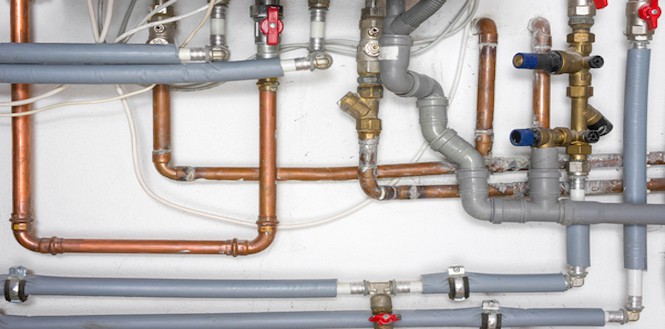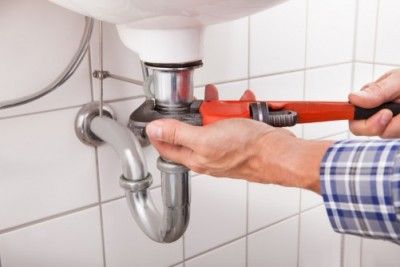Exploring The Structure of Your House's Plumbing System
Exploring The Structure of Your House's Plumbing System
Blog Article
Any individual may have their own unique idea in relation to The Inner Workings of Your Home's Plumbing.

Understanding exactly how your home's plumbing system works is vital for each home owner. From delivering tidy water for alcohol consumption, cooking, and showering to securely removing wastewater, a well-kept pipes system is crucial for your household's health and wellness and comfort. In this extensive guide, we'll check out the complex network that composes your home's pipes and offer suggestions on upkeep, upgrades, and taking care of common issues.
Intro
Your home's pipes system is greater than just a network of pipes; it's a complicated system that guarantees you have accessibility to tidy water and efficient wastewater removal. Understanding its elements and exactly how they collaborate can aid you prevent pricey fixings and ensure everything runs smoothly.
Fundamental Parts of a Pipes System
Pipelines and Tubes
At the heart of your pipes system are the pipelines and tubing that carry water throughout your home. These can be made of various materials such as copper, PVC, or PEX, each with its advantages in regards to durability and cost-effectiveness.
Fixtures: Sinks, Toilets, Showers, and so on.
Components like sinks, commodes, showers, and bath tubs are where water is made use of in your house. Recognizing just how these fixtures link to the plumbing system assists in identifying problems and planning upgrades.
Valves and Shut-off Factors
Shutoffs manage the circulation of water in your plumbing system. Shut-off valves are important during emergencies or when you need to make fixings, allowing you to isolate parts of the system without interrupting water flow to the whole house.
Supply Of Water System
Main Water Line
The main water line connects your home to the municipal water system or a personal well. It's where water enters your home and is dispersed to various components.
Water Meter and Stress Regulator
The water meter measures your water use, while a stress regulator ensures that water flows at a secure stress throughout your home's plumbing system, protecting against damages to pipelines and fixtures.
Cold Water vs. Hot Water Lines
Recognizing the difference between cold water lines, which supply water straight from the primary, and warm water lines, which bring heated water from the hot water heater, helps in repairing and planning for upgrades.
Water drainage System
Drain Piping and Traps
Drain pipes lug wastewater away from sinks, showers, and commodes to the sewage system or septic tank. Catches prevent sewage system gases from entering your home and also catch debris that might cause blockages.
Ventilation Pipelines
Air flow pipes permit air into the water drainage system, preventing suction that can slow drain and cause catches to empty. Correct ventilation is necessary for maintaining the stability of your pipes system.
Significance of Correct Drainage
Making sure correct drainage stops back-ups and water damage. On a regular basis cleansing drains pipes and maintaining traps can protect against pricey repairs and prolong the life of your pipes system.
Water Heating System
Types of Hot Water Heater
Hot water heater can be tankless or traditional tank-style. Tankless heating units warmth water as needed, while tanks keep warmed water for prompt use.
Exactly How Water Heaters Attach to the Pipes System
Understanding exactly how hot water heater attach to both the cold water supply and hot water distribution lines assists in identifying concerns like insufficient hot water or leaks.
Upkeep Tips for Water Heaters
Routinely flushing your water heater to eliminate debris, examining the temperature settings, and examining for leaks can prolong its life expectancy and boost power efficiency.
Common Plumbing Issues
Leaks and Their Causes
Leakages can happen as a result of maturing pipelines, loosened installations, or high water stress. Resolving leakages promptly avoids water damage and mold growth.
Blockages and Obstructions
Blockages in drains and bathrooms are typically triggered by purging non-flushable products or an accumulation of oil and hair. Utilizing drainpipe displays and being mindful of what decreases your drains pipes can protect against obstructions.
Indicators of Pipes Troubles to Expect
Low tide stress, sluggish drains, foul odors, or abnormally high water costs are indicators of possible pipes issues that ought to be dealt with quickly.
Plumbing Maintenance Tips
Normal Examinations and Checks
Set up yearly pipes evaluations to catch issues early. Look for indicators of leakages, rust, or mineral accumulation in faucets and showerheads.
DIY Upkeep Tasks
Basic tasks like cleansing tap aerators, checking for toilet leakages making use of dye tablets, or insulating revealed pipelines in chilly climates can protect against significant plumbing issues.
When to Call a Specialist Plumbing Technician
Know when a pipes issue calls for specialist competence. Trying complicated repair work without proper expertise can lead to more damage and greater repair work prices.
Upgrading Your Plumbing System
Factors for Upgrading
Updating to water-efficient components or replacing old pipelines can enhance water quality, minimize water bills, and raise the worth of your home.
Modern Plumbing Technologies and Their Advantages
Check out modern technologies like wise leak detectors, water-saving commodes, and energy-efficient water heaters that can conserve money and reduce ecological impact.
Price Factors To Consider and ROI
Calculate the ahead of time expenses versus lasting savings when thinking about pipes upgrades. Numerous upgrades spend for themselves with lowered utility costs and fewer repairs.
Environmental Influence and Conservation
Water-Saving Components and Home Appliances
Mounting low-flow faucets, showerheads, and commodes can considerably lower water usage without giving up performance.
Tips for Minimizing Water Use
Simple routines like fixing leaks promptly, taking shorter showers, and running complete loads of washing and recipes can conserve water and reduced your energy bills.
Eco-Friendly Pipes Options
Think about lasting plumbing products like bamboo for floor covering, which is durable and environmentally friendly, or recycled glass for counter tops.
Emergency situation Preparedness
Steps to Take Throughout a Pipes Emergency
Know where your shut-off valves lie and just how to turn off the water system in case of a ruptured pipeline or major leak.
Value of Having Emergency Situation Contacts Useful
Maintain call information for local plumbing technicians or emergency situation solutions conveniently available for quick action during a pipes situation.
DIY Emergency Fixes (When Appropriate).
Momentary solutions like making use of duct tape to patch a leaking pipe or placing a container under a leaking tap can decrease damages until a professional plumbing arrives.
Conclusion.
Comprehending the composition of your home's pipes system encourages you to keep it properly, conserving money and time on repairs. By following regular maintenance routines and staying informed about modern plumbing innovations, you can ensure your plumbing system operates efficiently for years to come.
Understanding Your Home Plumbing System: A Comprehensive Guide
Plumbing System: The Lifeline of Your Home
At its core, the plumbing system is designed to perform two primary functions: bring fresh water into your home and remove wastewater. The system is a network of pipes, fixtures, and other components that transport water and sewage. Residential plumbing systems include potable water supply lines, drain-waste-vent (DWV) systems, and various plumbing fixtures that make water use in daily tasks possible.
Key Components:
Water Supply: This part of your plumbing system brings municipal water into your home, passing through the main water supply line. It s responsible for supplying all water needs, from drinking to bathing.
Drainage System: It carries waste and water away from your home to the sewer or septic system. This system includes all the piping within your home that leads to external sewage or septic systems.
Vent System: An essential yet often overlooked component, the vent system allows sewer gases to escape and lets air into the drainpipes, ensuring water and waste move correctly through the system.
Fixture: More Than Just Taps and Toilets
Plumbing fixtures are the most interactive parts of the plumbing system, including faucets, showers, toilets, and sinks. Each fixture is connected to the plumbing system and plays a role in either the delivery of freshwater or the disposal of waste and wastewater.
Types of Fixtures:
Faucets and Sinks: Used for washing hands, dishes, and other daily water needs.
Toilets: Dispose of human waste through the sewage system.
Bathtubs and Showers: Provide bathing facilities, requiring both hot and cold water supply.
Water Supply: The Source of Life
The water supply system is a critical component, ensuring that potable water is available throughout your home for various uses, including drinking, cooking, and cleaning. This system consists of pipes that distribute water to different parts of the house, controlled by valves to regulate the water flow.
Types of Plumbing: Materials and Methods
Various types of plumbing systems and materials are used in residential settings, each with its advantages and applications. From copper and PVC pipes for water supply to cast iron and ABS for drainage, the choice of materials can impact the longevity and efficiency of your plumbing system.
https://intownplumbingtx.com/articles/home-plumbing-system-guide/

Understanding Your Home Plumbing System: A Comprehensive Guide
Plumbing System: The Lifeline of Your Home
At its core, the plumbing system is designed to perform two primary functions: bring fresh water into your home and remove wastewater. The system is a network of pipes, fixtures, and other components that transport water and sewage. Residential plumbing systems include potable water supply lines, drain-waste-vent (DWV) systems, and various plumbing fixtures that make water use in daily tasks possible.
Key Components:
Water Supply: This part of your plumbing system brings municipal water into your home, passing through the main water supply line. It s responsible for supplying all water needs, from drinking to bathing.
Drainage System: It carries waste and water away from your home to the sewer or septic system. This system includes all the piping within your home that leads to external sewage or septic systems.
Vent System: An essential yet often overlooked component, the vent system allows sewer gases to escape and lets air into the drainpipes, ensuring water and waste move correctly through the system.
Fixture: More Than Just Taps and Toilets
Plumbing fixtures are the most interactive parts of the plumbing system, including faucets, showers, toilets, and sinks. Each fixture is connected to the plumbing system and plays a role in either the delivery of freshwater or the disposal of waste and wastewater.
Types of Fixtures:
Water Supply: The Source of Life
The water supply system is a critical component, ensuring that potable water is available throughout your home for various uses, including drinking, cooking, and cleaning. This system consists of pipes that distribute water to different parts of the house, controlled by valves to regulate the water flow.
Types of Plumbing: Materials and Methods
Various types of plumbing systems and materials are used in residential settings, each with its advantages and applications. From copper and PVC pipes for water supply to cast iron and ABS for drainage, the choice of materials can impact the longevity and efficiency of your plumbing system.
https://intownplumbingtx.com/articles/home-plumbing-system-guide/
I'm certainly very intrigued by Exploring Your Homes Plumbing Anatomy and I'm hoping you appreciated our blog entry. Do you know another person who is excited by the subject? Take a moment to share it. I take joy in your readership.
Click Report this page